roneill1995
Newbie
Help Identifying Mid Century Paolo Soprani
Hi, all! My grandma recently got out her old accordion, and I’d like to learn more about it. I’d say it’s from the late 1950s, as she got it when she was 13 (so 1960/61). The only identifying markings are “Paolo Soprani” and “made in Italy”. It has the “blue badge” and has three treble registers. I’ve tried searching different things, and even used Google image search to try to find another like it. However, I can’t seem to find any with the same red and white color, grill style, and number of register switches. Any info would be greatly appreciated! I’m very interested in antique/vintage items and would love to know more about the model of this accordion. Thanks so much!!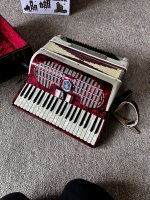
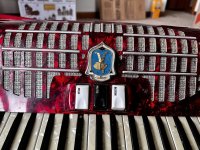
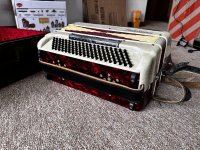
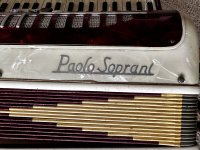
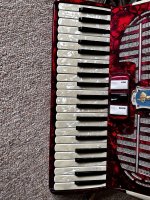
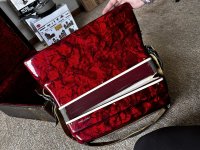
Hi, all! My grandma recently got out her old accordion, and I’d like to learn more about it. I’d say it’s from the late 1950s, as she got it when she was 13 (so 1960/61). The only identifying markings are “Paolo Soprani” and “made in Italy”. It has the “blue badge” and has three treble registers. I’ve tried searching different things, and even used Google image search to try to find another like it. However, I can’t seem to find any with the same red and white color, grill style, and number of register switches. Any info would be greatly appreciated! I’m very interested in antique/vintage items and would love to know more about the model of this accordion. Thanks so much!!






